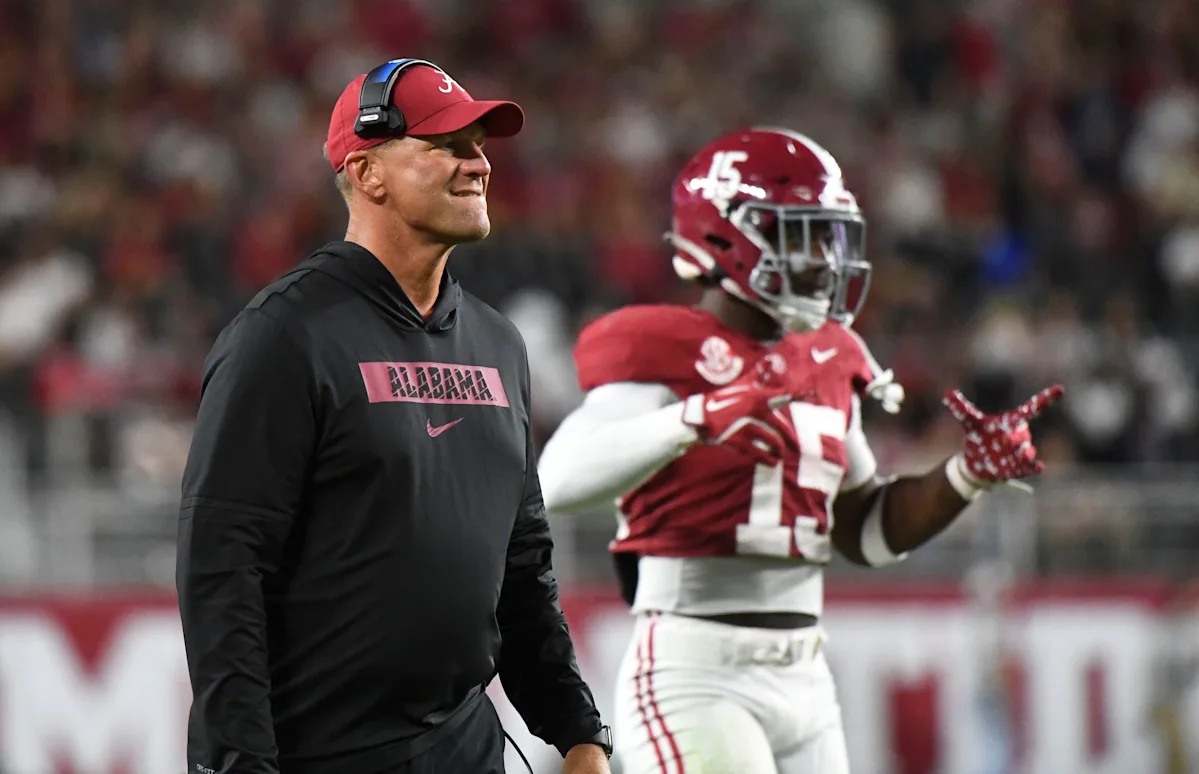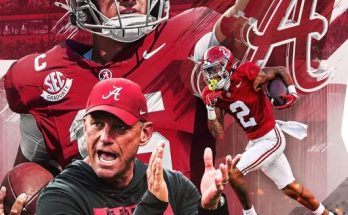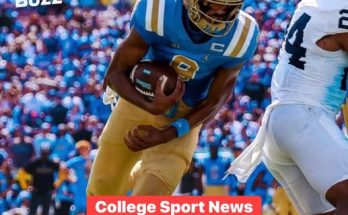In a time when the college football landscape has been reshaped by player mobility, Name, Image, and Likeness (NIL) opportunities, and the transfer portal era, one program in the Southeastern Conference (SEC) has managed to accomplish what no other team in the league has: retain every single scholarship player through the 2025 spring transfer window. That program is none other than the University of Alabama. The Crimson Tide, long regarded as the gold standard of college football, has once again found itself in a class of its own—not just in talent or championships, but now in roster stability.
While programs across the SEC have experienced a predictable exodus of players looking for more playing time, a better scheme fit, or lucrative NIL deals elsewhere, Alabama stood firm. Every scholarship athlete stayed put. In an offseason filled with changes—most notably the retirement of Nick Saban and the arrival of new head coach Kalen DeBoer—the fact that Alabama has retained its entire scholarship roster speaks volumes. It’s a testament to the strength of the program’s culture, the trust in new leadership, and the direction of college football’s evolving dynamics.
To understand how significant this is, one must first recognize the nature of the modern transfer portal. It is no longer simply a place for underused backups or disgruntled players to find new homes. Today, it serves as a critical mechanism for both roster building and dismantling. Elite programs are no longer safe from player departures. Even perennial powerhouses such as Georgia, LSU, and Florida have watched highly recruited players pack their bags and head elsewhere. Talent acquisition is no longer a one-time deal on National Signing Day; it is an ongoing process, with the transfer portal playing a central role in shaping rosters year-round.
In 2025, the spring window—which opened in mid-April—was expected to bring some level of attrition for every SEC team. Some players inevitably realize their place on the depth chart may not lead to significant playing time in the fall. Others receive interest from outside programs offering both starting roles and NIL incentives. Across the conference, this pattern played out again, with Georgia seeing three scholarship players leave, Tennessee losing a pair of promising young defenders, and even upstart programs like Ole Miss and Missouri watching as key contributors tested the market. But Alabama? Not a single scholarship departure.
That is not to say Alabama’s offseason was quiet. Far from it. The departure of Saban, widely considered the greatest coach in college football history, sent shockwaves through the sport. His successor, Kalen DeBoer, arrived in Tuscaloosa with a daunting task: not just to follow in Saban’s footsteps but to preserve the high standards the program has maintained for over a decade and a half. DeBoer, coming off a successful tenure at Washington—including a national championship appearance—brought with him both optimism and questions. Would players recruited to play for Saban stay loyal to a new regime? Would the transition spark transfers as players re-evaluated their futures?
The answer, as it turns out, was no. In fact, not only did Alabama players stay, but many publicly expressed confidence in DeBoer and the new coaching staff. Quarterback Jalen Milroe, who blossomed into a dual-threat star in 2024, reaffirmed his commitment to leading the Tide into the DeBoer era. Defensive standouts like Dallas Turner and Caleb Downs voiced support for the direction of the team. Across the board, players opted in—not out. That level of buy-in is almost unheard of during a coaching transition, especially one following a titan like Saban.
There are multiple factors that contributed to Alabama’s unprecedented retention during the spring window. First and foremost is the culture Saban built. Even in his absence, the framework of expectations, accountability, and competitiveness remains deeply embedded. Players who come to Alabama do so with an understanding of what it means to wear the crimson and white. The bond among teammates, the access to elite training facilities, the national spotlight, and the NFL pipeline all provide incentives to stay. It’s not easy to walk away from that, even with promises of more playing time elsewhere.
Then there’s the DeBoer effect. The new head coach has been deliberate in how he approaches his role, emphasizing open communication, continuity, and trust. Rather than attempt to revolutionize the program overnight, he’s wisely chosen to build on its foundation. His first priority was retaining key assistants and connecting with players on a personal level. Those efforts clearly paid off. While the spring portal period can often be a referendum on how well a coach is connecting with his roster, Alabama passed the test with flying colors.
NIL opportunities also play a role, and Alabama has established itself as a major player in the space. While it may not offer the eye-popping individual deals seen at some other schools, the collective strength of the program’s brand ensures that players are taken care of and don’t feel the need to chase uncertain opportunities elsewhere. The Crimson Tide’s infrastructure—from its alumni network to its business relationships—ensures a level of stability that many other programs cannot replicate. Players know that staying at Alabama sets them up not just for success on the field, but off it as well.
The strength and unity of Alabama’s locker room can’t be overstated either. Senior leaders have reportedly played a significant role in reinforcing the message that success in Tuscaloosa is earned, not given, and that transferring should be a last resort—not a first option. The program’s emphasis on internal development, competition, and delayed gratification runs counter to much of the modern transfer culture, but it’s a philosophy that clearly still resonates with its players.
It’s also worth noting the broader implications of Alabama’s clean spring. In a conference as competitive as the SEC, even the smallest edges matter. Retaining depth, experience, and continuity while other programs scramble to refill holes gives Alabama an enormous advantage heading into the summer and fall. Players know the system. They’ve trained together. They’ve built chemistry. That continuity often shows up in high-pressure moments on Saturdays in the fall.
This development also sends a message to recruits and future transfers: Alabama is still a destination where players want to be—and stay. Amid constant speculation that the Tide might finally take a step back post-Saban, the program’s internal stability suggests otherwise. DeBoer not only kept the roster intact, but he did so while beginning to reshape it in his image. That balance of honoring the past and innovating for the future is what elite programs must do to survive—and thrive—in this new era.
Across the SEC, coaches are watching Alabama closely. The Tide’s ability to hold onto every scholarship player during a portal window that claimed hundreds of others across the nation is a signal that the program is far from vulnerable. If anything, it’s reloaded. That’s a chilling prospect for the rest of the league. Programs like LSU and Georgia may still compete for titles, but the idea that Alabama might slide into mediocrity without Saban now looks far-fetched. The players are staying. The staff is building. The vision is clear.
While the portal era has introduced chaos into college football, it has also revealed which programs are built to last. Flashy recruiting classes and splashy transfers may win headlines, but retention, buy-in, and culture win championships. Alabama has long understood this. The spring of 2025 simply reaffirmed it.
As the season draws closer, all eyes will be on Alabama. Every move, every play call, and every result will be analyzed under the microscope of what it means in the post-Saban era. But one thing is already clear: the players believe. They’ve voted with their presence, their commitment, and their trust. In a time when leaving has never been easier, they chose to stay.
And in doing so, they’ve made Alabama the only SEC program with a perfect scorecard for spring retention—a title that, in this day and age, may be just as impressive as any trophy.
Would you like help with headline ideas or a graphic to go along with this story?



